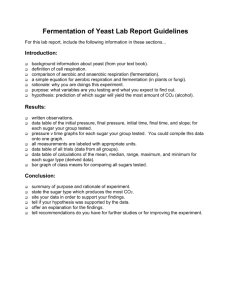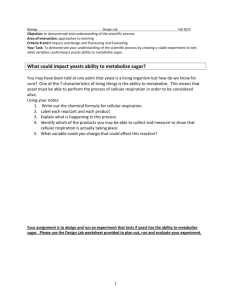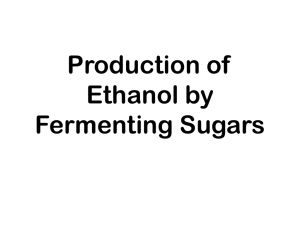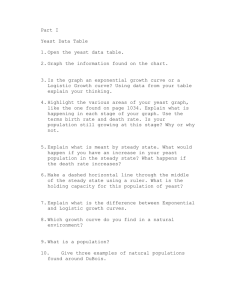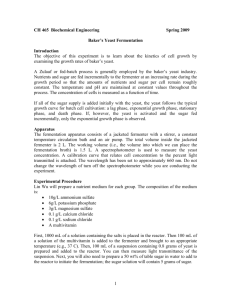Tarah Nyberg's Yeast CO2 - Aquatic Gardeners Association
advertisement
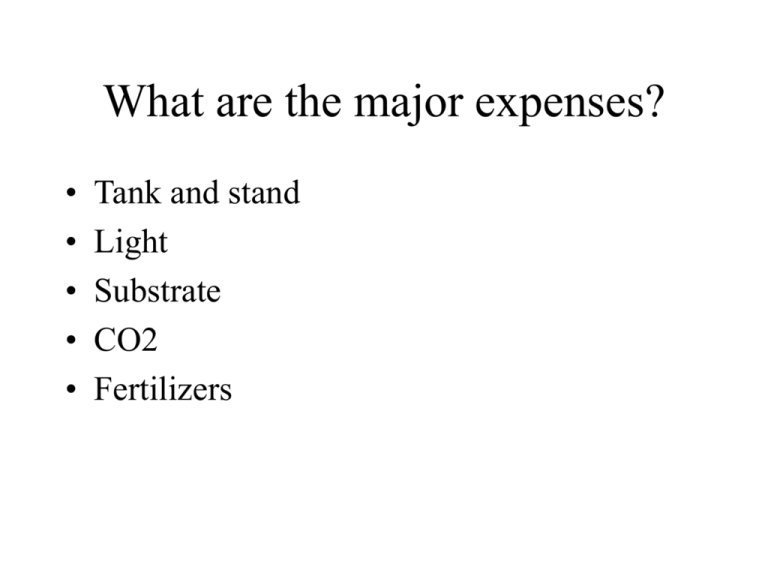
What are the major expenses? • • • • • Tank and stand Light Substrate CO2 Fertilizers How to live on the cheap. • Tanks and Stand -- buy used and pay no more than $1-2 per gallon. Re-paint stand as needed. Hammer in a few boards to make it more sturdy/look better • Lights -- use 48” electronic T8 fixtures that you can get at the hard ware store for ~$20 How to live on the cheapsubstrate • Substrate -- buy plain gravel or sand (also from hard ware store esp. if you can get the no-salt sand for icy roads) • Supplement in moderation with things like peat/soil (~1cup/ square foot) ironite (~1 T/square foot), • I like to make clay balls with added nutrients and add them both before and after a tank is planted. I recently set up a tank with nothing but clay balls. And plain gravel How to live on the cheap --CO2 • I have used yeast CO2 on tanks up to 180 gal. Also 75s, 65s etc. • 2 gallons of yeast changed once every 3wks to month depending on the temperature works well. I don’t rotate the bottles either. • The key to long lasting cultures is allowing them to grow and be happy. Also a little basic knowledge of yeast growth helps. Yeast Growth/metabolism • Yeast can either produce energy by fermentation or oxidative phosphorylation (ox/phos) • Yeast greatly prefer fermentation over ox/phos and will not start ox/phos until all the sugars are converted to ethanol. • Ethanol is a good source of energy and in the presence of oxygen yeast use it up as well. • Fermentation also produces 2 CO2 molecules per molecule of sugar-- as a by product. =) Why is just sugar and water not ideal? • When you just add sugar and water to yeast, they are essentially starving to death. • However the enzymes for converting sugar to ethanol are still in the cell and will work for a limited amount of time. • Since the cells do not have what they need to make new enzymes as cells starve/run out of enzymes the culture produces less and less CO2. Also, we add too much sugar. • Ethanol and sugar are increasingly toxic to yeast at greater than 10% concentrations. – Therefore 2cups (~500ml) of sugar in 2L of water (~25% sugar) is unhealthy for the yeast. – It is also a waste of sugar because 10% sugar will yield roughly 10% Ethanol at which point the yeast stop growing anyway. – Special strains of yeast, like champaine and wine yeast, have stronger cell walls that protect them from the Ethanol -- so they grow longer. Happy yeast give you long, productive cultures. • The solution is to give yeast less sugar and also supply them with the nutrients they need to grow. • This will give you a long lived culture that produces a consistent amount of CO2, (they are not challenged by toxic conditions at the beginning and end) • Also your yeast mass at the end will be alive and well and able to quickly start growing again when you add more sugar. The Recipe! • Improvise at will, but here is a good start: – Use 1 cup sugar per 2L H20 (tank water is great or dechlorinated tap -- chlorine, but not ammonia, kill yeast. ) (they like ammonia) – Add 1-2 tsp of a protein drink mix – (optional) Add 1 tsp of ammonium sulfate, otherwise use 1 T mollasses. (or both) – 1 tsp baking soda is also nice to keep the pH from crashing (they like it >pH3-4) Leave yeast from previous mix in the bottom. Benefits/conclusons • Growing yeast this way saves you time (less re-starting) and money on sugar and yeast. • The only real extra cost is the protein mix, but you can use really old/cheap stuff. – The key thing is that it has protein and vitamin/minerals, Anything that has “yeast extract” in it is perfect. – (Even non-fat powdered milk will do the trick, but it will smell funny)

